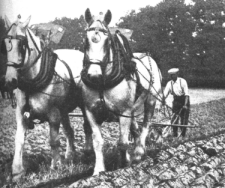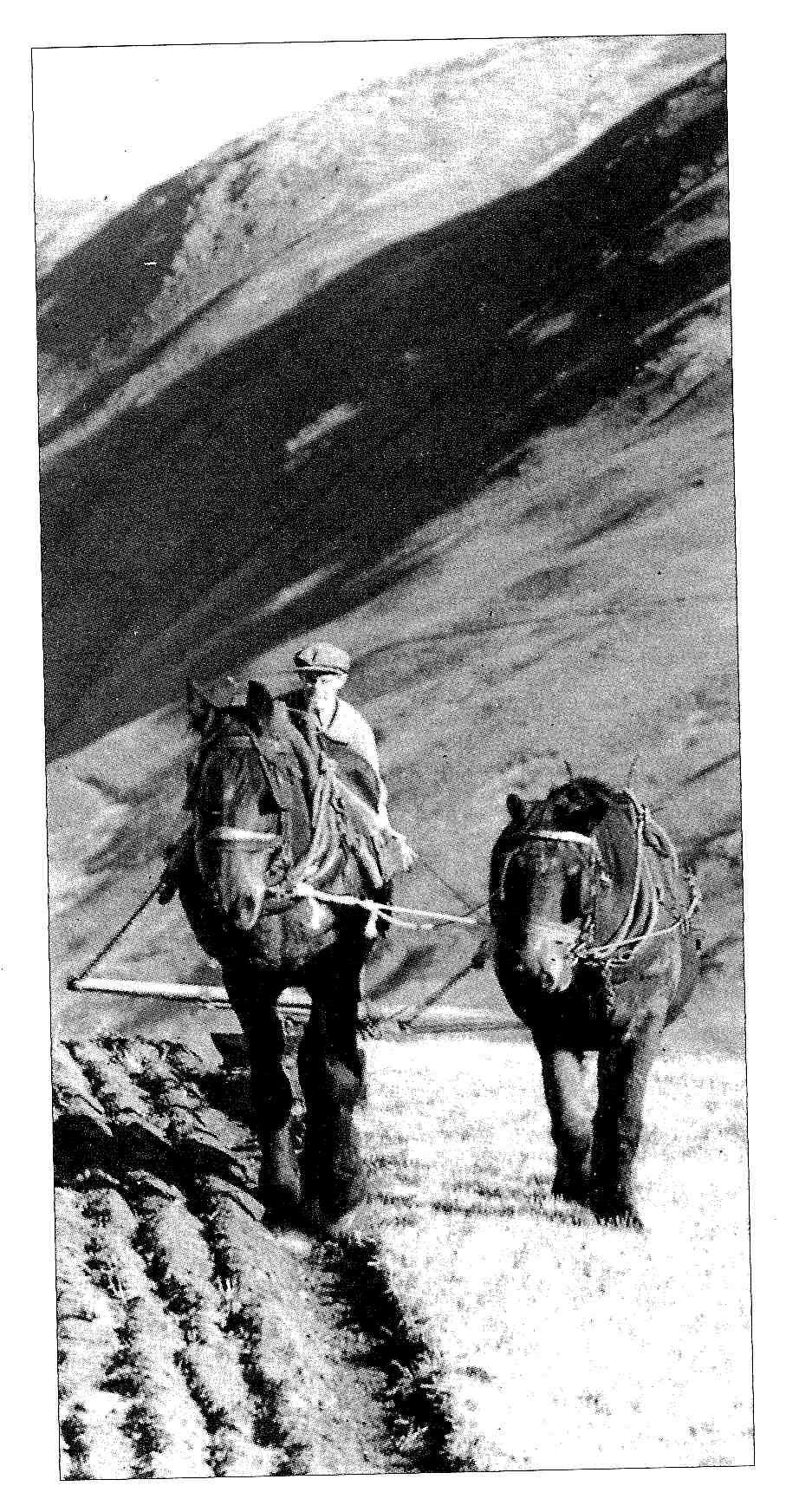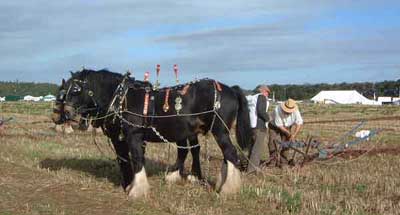Ploughing with horses

Ploughing with 2 Percherons in the 1930s.
David Trotter, retired greengrocer and Fell pony breeder, talks of his days as a farm worker:
"When you went down your first furrow you just skimmed a little bit, your first "down and back", and then you started putting your furrows onto that, to get it to lift a bit you see, a little ridge for it to sit on. Then it would drain. But once you got going the, it was pretty basic really. Once the plough sat in and your horses got going, you’d only sort of to guide it. The main thing was, just you had to watch if you hit a stone - the plough came up at you - well your horses would stop, and if it was a really heavy stone, you’d perhaps to bypass it and dig it out afterwards, but that was the main danger. Your normal stones just rolled to one side, but just occasionally a big one, if you’d hit it, shafts’d come up and give you a clout under t’chin like."

Ploughing - a mid-20th C pairing of the "farm horse" Clydesdale x and the "maid of all work" Fell pony. Probably in the Howgills, possibly in wartime when a good deal of pasture went under the plough for the first time since medieval days. (Rollinson, The Lake District: Life and Traditions)
Did the Plough tip to one side at all when you were working?

"No, once you’d got going, no it just went itself like. A pair of good horses that knew the job, well one’d be in t’furrow and t’other up on top, a pair of good horses, they would nearly plough themselves."
Photo, left: Jim Elliott adjusts the height of the land wheel during setting-out at the 2003 Championships (Hornby Hall, Penrith, Cumbria). Jim was National Horse Ploughing Champion 2002 and 2003. He is working with Lion and Prince. Notice how the horses stand unheld while he works. They are wearing smarter-than-usual harness with plumes, stainless steel chains, shining brasses, and bells which tinkle sweetly as the work goes on.
Championship ploughing, being judged on uniformity and straightness, demands that both horses work on the land to prevent them spoiling the perfection of the furrows. Much adjustment goes on and the horses need to be hugely patient with the ploughman's constant starting and stopping to correct the plough, throw out rocks, consolidate crumbly parts, and pick out unburied weeds. Young horses can become restless with the frequent changes of commands.
John Gate's comment, from the sidelines, on this perfectionism: ""By Gum, the rate they're gaan, these lads aren't like to ploo a yacker a day!" (at the rate they are going, these lads wouldn't be able to plough an acre a day).
Video of an expert turn on the field headland - mopping the brow with one hand, managing horses and plough with the other! [Jim Elliott 2003: MPG3, 1.1MB, AVI 1.7MB.] Lovely lateral work by Prince and Lion. The plough is a single furrow Ransomes RNE7.
How long would you plough for in a day?
David Trotter: "Well, you would milk, and then you would do up, so say - nine, half past nine, you would start ploughing, and you would plough away till dinner time, unhitch, leave the plough and come home for your dinner - like half an hour for dinner, then you’d plough till say four o’clock, then you’d unhitch, bring the horses home, and then milk again. We knocked off for milking and a bit of doing up and stock to look after, so the horses didn’t just have as long a day with us. Now perhaps on big spots, say down Ormskirk and that, they could very easy plough away all day, couldn’t they."
At the 2003 National Ploughing Championships, the horse ploughing class allowed the competitors from 9-30 am to 3-30pm to work one plot.